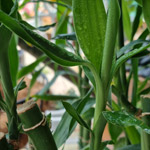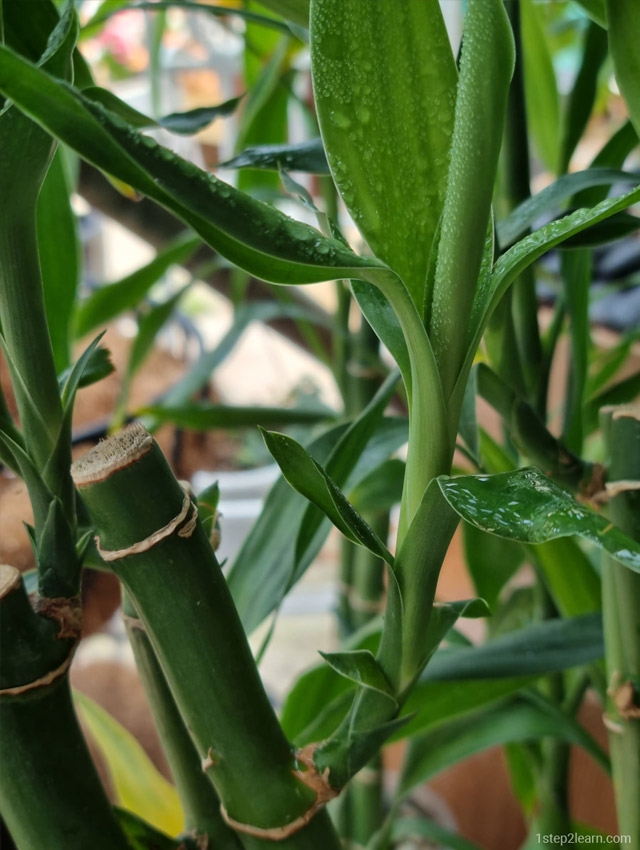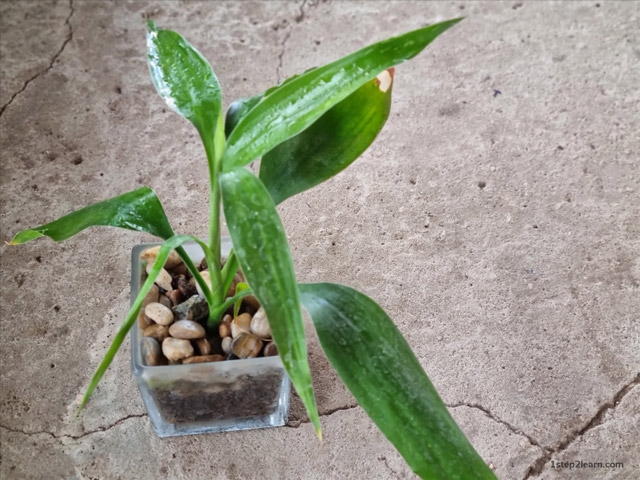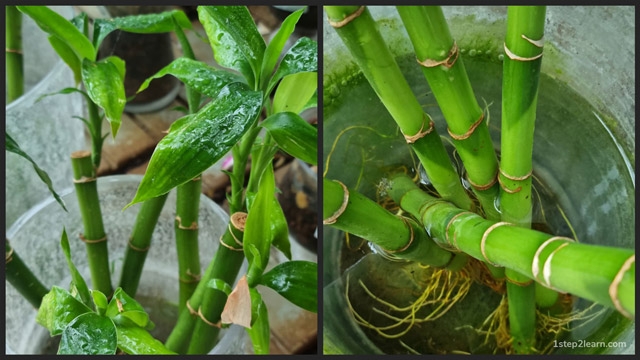Lucky Bamboo - Dracaena Sanderiana
Lucky Bamboo
Lucky Bamboo (Dracaena Sanderiana) is a highly sought-after houseplant, known for its unique and attractive appearance and its association with good fortune and prosperity in many Asian cultures.
But did you know that it's not actually bamboo at all? It's actually a species of tropical evergreen perennial plant, scientifically known as Dracaena sanderiana, which is native to West Africa.
One of the reasons why Lucky Bamboo is so popular is due to its versatility and ability to thrive in a range of conditions. It can be grown in low light, as well as in stagnant water or hydroponic gel, making it an ideal choice for those who want a low-maintenance plant.
While it can also be grown in soil, it is most commonly grown in containers filled with water or hydroponic gel.
In addition to its ease of care, Lucky Bamboo is also prized for its unique appearance. It is often arranged in a specific way, such as in a bundle of stalks tied together or in a specific shape, to bring different types of good luck and fortune.
This arrangement is said to bring positive energy into the home and promote prosperity, health, and happiness.
Despite being marketed as Lucky Bamboo, it is important to note that this plant is not actually bamboo. Bamboo is a type of grass, while Dracaena Sanderiana is a species of tropical evergreen perennial plant. However, its common name, Lucky Bamboo, has stuck and remains widely used today.
Slow Growth
Lucky Bamboo is known for its slow growth rate. It typically grows just a few inches per year, making it a long-term addition to your home or office.
The growth rate of the plant can be affected by several factors, such as the amount of light it receives, the temperature and humidity of its environment, and the quality of the water and soil it's grown in.
However, with proper care, Lucky Bamboo can live for many years and become a cherished part of your indoor landscape.
Care
Lucky Bamboo is a highly sought-after houseplant known for its unique appearance and association with good fortune and prosperity in many Asian cultures. But did you know that this plant is also low-maintenance and easy to care for? If you're considering adding a Lucky Bamboo plant to your home, here are some tips to help you keep it healthy and thriving.
Light: Lucky Bamboo prefers bright, indirect light, but it can also tolerate low light conditions. Avoid placing it in direct sunlight, as this can cause the leaves to scorch and yellow. If you're growing Lucky Bamboo in a dark room, consider adding a grow light to provide the plant with the light it needs to grow.
Water: Lucky Bamboo can be grown in water or hydroponic gel, and it's important to change the water every 2-3 weeks to keep it fresh. The water should be room temperature and clean, and you should avoid using tap water, as it can contain chemicals that can harm the plant. You can also add a small amount of liquid fertilizer to the water to provide the plant with the nutrients it needs.
Soil: If you're growing Lucky Bamboo in soil, make sure to use a well-draining, fertile soil mix. You can also add a small amount of fertilizer to the soil to provide the plant with the nutrients it needs.
Pruning: Lucky Bamboo can become leggy and unsightly if it's not pruned regularly. Prune the top of the plant to encourage new growth and remove any yellow or brown leaves.
Propagation From Cuttings
You can propagate lucky bamboo from cutting! It's super easy, and I thought you might find it interesting too. So here's how you do it: first, you'll need to take a stem cutting from an existing Lucky Bamboo plant. Just make sure the cutting is about 4-6 inches long.
Once you have the cutting, you'll want to put it in a transparent container filled with water. Make sure the water covers at least an inch or two of the stem. The transparent container is important because it allows you to see the root development, which is pretty neat to watch. Plus, Lucky Bamboo likes indirect light, so the transparent container lets it get the light it needs without direct sun exposure.
Now comes the waiting game. You'll need to be patient because it can take a few weeks for the roots to start growing. But trust me, it's worth it! Once the roots are about an inch long, you can transfer the cutting to a pot with soil or back into water, whatever you prefer.
Oh, and don't forget to change the water every few days to keep it fresh. And while you're at it, take a look at the roots too, they'll tell you if they're happy or not. Healthy roots are white and plump, while unhealthy ones might be brown or mushy.
The Legend of Lucky Bamboo
In many Asian cultures, it is believed that this plant brings good fortune and prosperity to the home. The plant is thought to attract positive energy and neutralize negative energy, making it a popular choice for use in feng shui.
One of the most popular legends about the Lucky Bamboo plant is that it was discovered by a Chinese scholar who was lost in a forest.
The legend goes that a Chinese scholar discovered the Lucky Bamboo while lost in a forest. He was searching for food and water when he came across a group of bamboo plants growing in a small spring.
"Prosperity is not just having wealth, but being in a state of happiness and well-being."
Impressed by the lush and verdant growth, even in unfavorable conditions, he took a cutting of the plant with him. When he returned home, he placed the cutting in a vase of water and was amazed to see it continue to grow and thrive.
From that day on, the scholar believed that the bamboo was a gift from the gods, and he began to share it with others.
The Lucky Bamboo soon became a symbol of good luck and prosperity, and is now a popular choice for use in feng shui.
The Symbolism of Lucky Bamboo in Asian Cultures
Did you know that in some Asian cultures, the number of stalks in a bundle of Lucky Bamboo is believed to hold significant symbolism?
For example, three stalks are thought to represent happiness, wealth, and long life. These three stalks together symbolize a life full of joy, financial stability, and a long and healthy existence.
Similarly, a bundle of five stalks is considered to represent the five blessings of wealth, health, longevity, love, and virtue. In these cultures, there are often special sayings or blessings associated with these numbers and their symbolism.
By placing a bundle of Lucky Bamboo in their home or workspace, people hope to attract these blessings and experience good luck and prosperity in their lives.
It's fascinating to see how cultural beliefs and traditions are woven into the symbolism of plants like the Lucky Bamboo. Whether you believe in its power to bring good luck and prosperity or simply appreciate its unique appearance, there's no denying the cultural significance of this fascinating plant.
Conclusion
I hope I was able to provide you with the information you were looking for. From its origin in West Africa to its popularity as a houseplant in Asia, the Lucky Bamboo has a rich and interesting history.
Its association with good fortune and prosperity has made it a popular choice for those seeking to bring positive energy into their homes or workspaces.
And with its ability to thrive in a range of conditions, its easy care requirements, and its unique appearance, it's no wonder that this plant continues to be a favorite among plant enthusiasts.




